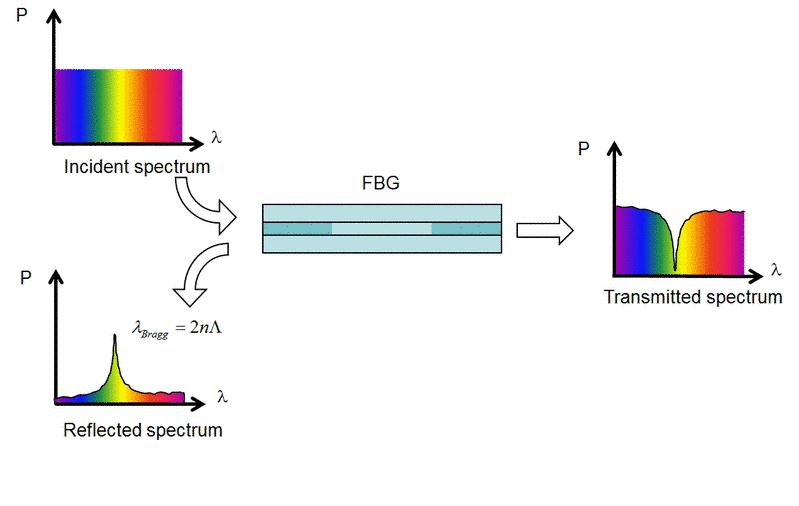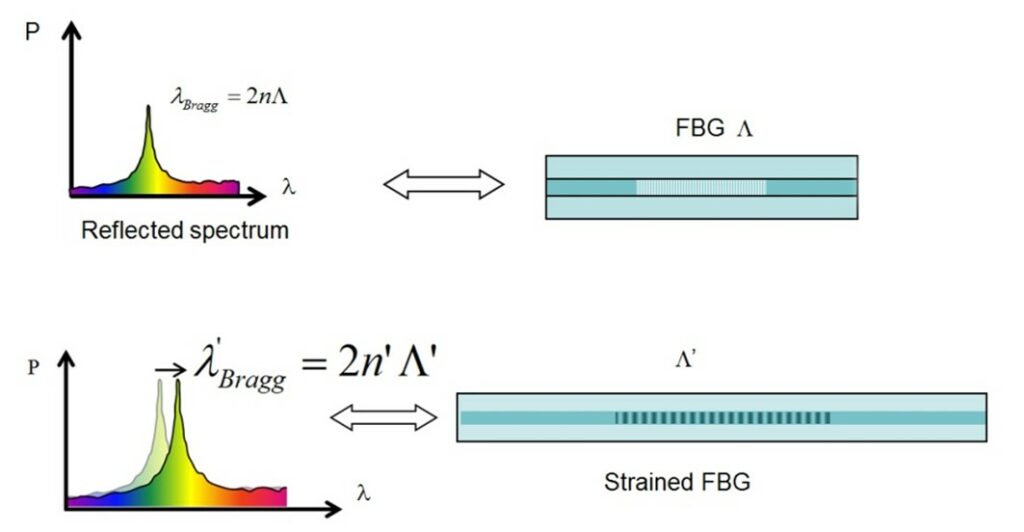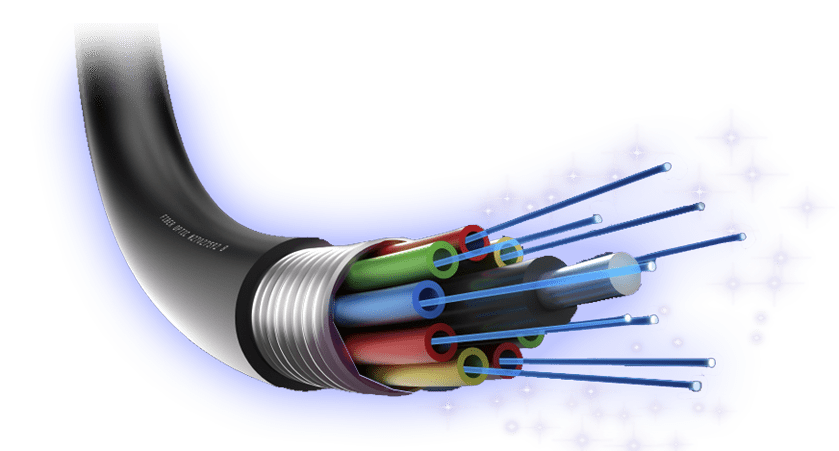A fiber bragg grating is basically a spatial variation of the refractive index inside the core of an optical fiber. This variation is created by exposing the core to a periodic pattern of UV light with a defined energy. After this process the grating works as a wavelength selective mirror. At each position of the periodic index variation a small part of the light travelling along the fiber is reflected back. These small portions of reflected light are combined coherently to one large reflection. The wavelength where the maximum reflection occurs is called the Bragg wavelength and meets the Bragg condition:

neff – effective refractive index over the exposed region
Λ – Grating period

This equation indicates that the Bragg wavelength can be affected by the change of the 2 parameters mentioned above (effective refractive index and grating period). This explains why an FBG is sensitive to strain change and temperature:
- A strain change leads to a displacement of the grating period, and to a variation in the effective refractive index through the stress-optic effect
- Temperature change affects the effective refractive index through the thermo-optic effect and the grating period through the thermal expansion of the fiber.
These effects are approximately described by the following equation:


In a case, that an FBG is subject to thermal and mechanical variations at the same time, there is no technique how to distinguish them from each other. To solve this, there are several methods. One possibility is to fabricate a sensor, which is sensitive only to temperature changes. By the means of this temperature sensor it’s possible to compensate the temperature effects of a strain sensor.
There are two types of temperature compensation. As it’s shown in the formula the temperature influence is composed of two effects: thermal expansion of the load-transferring material and the thermo-optic effect. The first type of compensation compensates only the thermo-optic effect, and the second type compensates both of them. It always depends on the application which type should be chosen.

